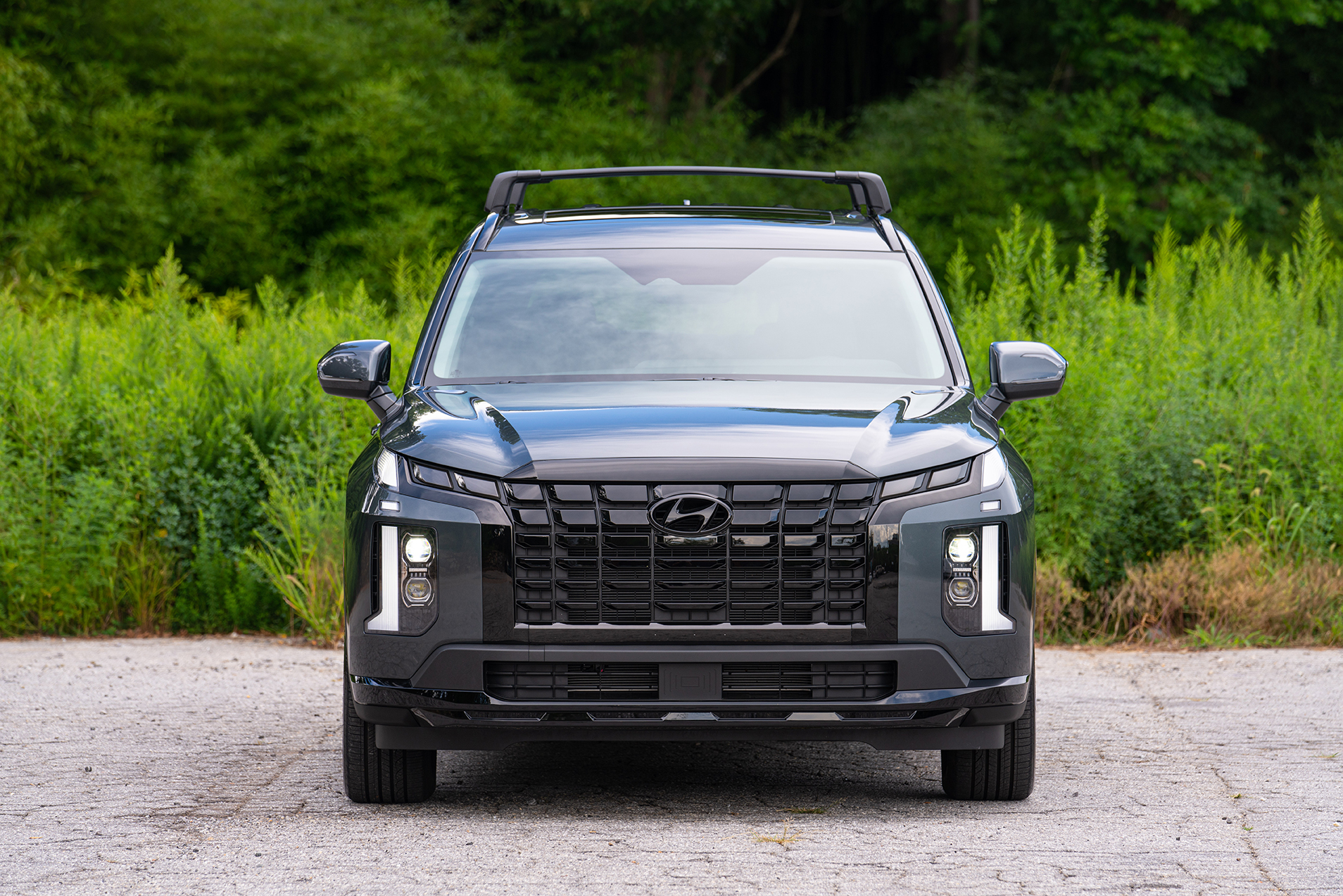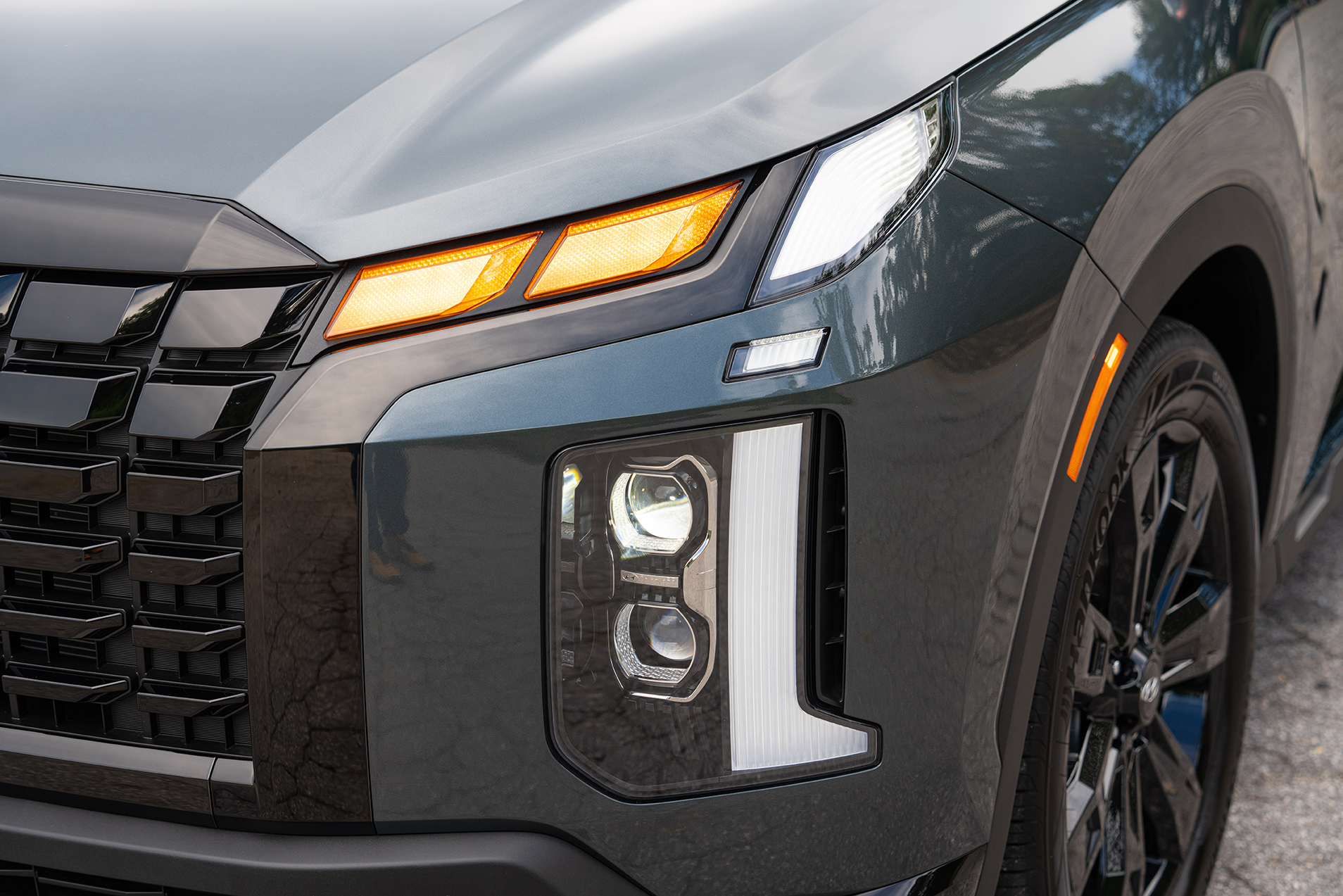LAKE De QUEEN, Ark. -- A winding and rocky road to Pine Ridge Park Trail proved no challenge for the all-wheel-drive system, and a glance in the mirror at the back seats told me the Hyundai Palisade's comforts were more than plentiful for three grandchildren.
Our $45,108 XRT model's tester came with the same powertrain found in all Palisades: a robust 3.8-liter V6 engine that delivers 291 horsepower and 262 lb-ft of torque paired with an eight-speed automatic transmission. It provides smooth acceleration for sweeping around slow traffic that snarls U.S. 71, a dangerous relic from another century that is the best Arkansas has to offer the western edge of the state.
Look past poor fuel economy ratings, high greenhouse emissions, and questionable reliability, and the Palisade is a pleasing hauler of people, pets, and cargo.
The Palisade has long been a favorite among families seeking a spacious and reliable SUV. With the introduction of the XRT trim, Hyundai elevated its flagship SUV to new heights. With rugged styling, advanced technology, and exceptional comfort, the Palisade XRT is an excellent family vehicle for everyday adventures.
The XRT trim adds unique exterior styling elements, including dark-finish 20-inch alloy wheels, a bold front grille, and rugged roof rails.
A word about roof rails: leave them off unless you have a specific and frequent need, like hauling a canoe. They significantly elevate wind noise and disrupt airflow. Fuel economy is a complex algorithm; the most potent variable is not mass but aerodynamics. According to studies, roof rails can cause a vehicle to consume up to 25% more fuel.
They look fantastic and project a rugged, self-reliant image. Manufacturers, ultimate realists, put them on because they know that 70% of buying decisions come from the emotions of the lizard brain (basal ganglia), not the logic of executive function (prefrontal cortex).
In the immediate case, at 21 mpg, the Palisade has one of the lowest fuel economy ratings in a segment where competitors frequently reach 34 mpg or better.
Prominently displayed on all new-vehicle window stickers are fuel and emissions performance. Those who frequently peel off $100 bills at gas stations or wonder why homeowner's insurance is skyrocketing even though they live hundreds of miles from the coast might be wise to start reading them.
MEETING FAMILY NEEDS
The Palisade XRT offers a host of features that cater to families. A spacious cabin accommodates up to eight passengers, ensuring everyone can comfortably travel. The generous cargo space (18 cubic feet with all seats in use and 86 cubic feet with the third row folded down) accommodates everything from groceries to luggage for family vacations.
The XRT's interior boasts a blend of comfort and practicality. The cabin features premium materials and a modern design, with well-bolstered seats that offer support and relaxation during long journeys. The spacious layout provides ample legroom and headroom for passengers in all three rows.
Notably, Hyundai paid particular attention to keeping the cabin quiet. Thanks to the liberal use of sound-deadening materials, road and wind noise are minimal, making for a serene and enjoyable ride.
Fit and finish, inside and out, are well above industry standards.
The Palisade XRT comes standard with Hyundai's HTRAC All-Wheel Drive system, which provides improved traction and handling in various driving conditions. Having it on icy and wet roads is lovely, but the system also significantly improves handling and stability in curves and emergency maneuvers.
Add a suspension system that balances ample grip with a comfortable ride, and the Palisade is a pleasant, almost luxurious car to drive.
PRICE POINTS BY TRIM
A base Palisade SE starts at $36,800. The 2025 Hyundai Palisade XRT starts at $44,150 and ranges to $50,600 for the top-of-the-line Calligraphy XRT trim. The most expensive Palisade is the Calligraphy Night Edition at $54,100.
Rivals like the Toyota Highlander, Honda Pilot, and Ford Explorer offer similar features and capabilities. The Highlander starts at $36,020 and offers a hybrid powertrain option at $40,720. The Honda Pilot, with impressive cargo capacity, begins at $39,375. The Ford Explorer starts at $34,170 and boasts a more powerful engine lineup.
SAFETY RATINGS AND DRIVER-ASSIST TECHNOLOGIES
Hyundai prioritizes safety in the Palisade XRT, equipping the SUV with a comprehensive suite of standard driver-assist features called SmartSense. This includes Forward Collision-Avoidance Assist with Pedestrian Detection, Blind-Spot Collision-Avoidance Assist, and Rear Cross-Traffic Collision-Avoidance Assist. Higher trim levels add advanced technologies like a Surround View Monitor and Blind-Spot View Monitor.
As with all Hyundai and Kia models we have evaluated, the driver-assist technology works flawlessly.
The Palisade has earned top safety ratings from the Insurance Institute for Highway Safety (IIHS) and the National Highway Traffic Safety Administration (NHTSA).
MAINTENANCE AND RELIABILITY
Predicted reliability ratings from J.D. Power, which concentrates on new vehicles, are above average. Still, the Lambda engine family, which Hyundai has produced since 2012, has a history of known issues and recalls. It is not as bad as Hyundai/Kia's fire-prone 2.0-L and 2.4-L Theta II engines, which led to the most extensive and most expensive recalls in automotive history, but they are still substantial.
Problems with the Hyundai 3.8L V6 GDI engine and the expected mileage at which these issues typically occur:
Oil Leaks: Often caused by a failed valve cover gasket or oil pan seal. These leaks usually start to appear around 60,000 to 80,000 miles.
Engine Stalling: This can be due to a faulty crankshaft position sensor or fuel pump. Engine stalling issues can occur as early as 50,000 miles but more often occur around 70,000 to 100,000 miles.
Abnormal Engine Noises: These noises, often due to worn timing chains or hydraulic lifters, are typically noticed around 80,000 to 100,000 miles.
High Oil Consumption: Some, not all, owners report needing frequent oil top-ups, which can start as early as 50,000 miles but are more frequently reported around 70,000 to 90,000 miles.
Timing Chain Tensioner Failure: This issue can cause loud rattling noises and potential engine damage, often around 100,000 miles.
Cylinder Head Gasket Leaks: These leaks lead to coolant loss, and they usually appear around 90,000 to 120,000 miles.
WARRANTY INFORMATION
Hyundai offers an impressive warranty package, including:
5-year/60,000-mile new vehicle warranty
10-year/100,000-mile powertrain warranty
7-year/unlimited miles anti-perforation warranty
Caveat Emptor: These warranties are not transferrable. The first owner may spend time at the shop getting things fixed under warranty. The second buyer needs an extended warranty. Dealers know these facts, so expect a low-ball offer at trade-in time.
Bottom Line: We really did like the Palisade, but the lack of a hybrid option is a deal killer. Not only do hybrids deliver almost double the fuel efficiency, but because electric motors do so much of the heavy lifting, gas engines in hybrids last much longer.



